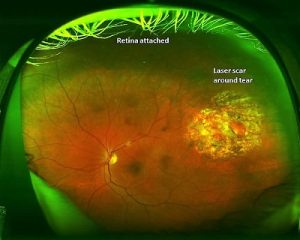If you like to hike a mountain and feel lightheaded or nauseous then you may have the signs of altitude sickness. It is also known as mountain sickness. When people travel to certain high altitudes, they may experience it. Not only hikers but anyone can get the problem of altitude sickness after visiting a place that has a high altitude.
These locations can lead to issues for anyone. When your body attempts to adjust to the air pressure and oxygen levels that are lower while being present at high altitude, you may get the signs of mountain sickness. Not specific individuals are at risk but anyone can experience altitude sickness.
Age, general health, and sex of people are not associated with the risks. However, you are at risk if you have the following conditions.
- Conditions Related To Lungs Or Heart: If you have any health condition related to the lungs or heart, your doctor may advise you to avoid visiting places that have high altitudes.
- Pregnancy: In case of pregnancy, discuss it with your doctor before going to the locations of high altitude.
- Surviving In Low Elevation: If you normally live at places that do not have higher altitudes, you are vulnerable to getting the symptoms of altitude sickness. You should know the signs that indicate altitude sickness before going to locations of high altitude.
- History Of Having Altitude Sickness: Tell your doctor if you have already experienced the symptoms that show altitude sickness. He or she will guide you about prevention and possible treatment before going to high-altitudes next time.
Many people can experience acute mountain sickness after going to high altitudes. If the location is higher than the feet of 10,000 it is possible that 75% of people may get the symptoms of mild level. Acute mountain sickness or AMS has three categories given below.
- Mild Level Of AMS: Signs like fatigue and headache do not disturb the normal activities of individuals in mild AMS. You may get relief from the symptoms after two or three days. Your body automatically adjusts at the current elevation.
- Moderate Level Of AMS: Symptoms that indicate altitude sickness disturb your activities when you experience them at a moderate level. People with this problem may get problems with coordination, headache, and the feeling of nausea. You may feel good after descending.
- Severe Level Of AMS: In the severe form of altitude sickness, people feel breath shortness even when they take a rest. They feel problems in walking. Go to a lower altitude as soon as possible and get proper medical care.
There are two severe levels of altitude sickness. People rarely get these issues but they cause more serious symptoms. Both forms can prove life-threatening for individuals. In the cases given below, you should immediately go to a lower altitude and seek treatment.
- HAPE: In this condition, individuals have an excess amount of fluid on the area of the lungs. It causes breathlessness when an individual takes a rest. Individuals with this condition may feel weak and fatigued to a severe extent.
- HACE: It puts the excess amount of fluid on the area that surrounds your brain. An individual with this condition can get swelling in the brain area and sometimes face issues in coordination. The behavior of people with high altitude cerebral edema can become violent.
Causes
Rapid alterations in the pressure and oxygen levels of air at the places of higher elevations can result in altitude sickness. Give time to your body so it can adjust to the less amount of oxygen when you go to high altitudes.
When you start traveling to certain high elevations without giving time to your body to adjust to having less amount of oxygen, you get the symptoms that show altitude sickness. You can get this problem even if you are fit physically.
The lower pressure of air at the locations of high altitude can cause leakage of fluid from the area of your blood vessels. Researchers do not have any idea about why it occurs in individuals. This leakage lead to the building up of fluid in your brain and lungs area.
We suggest you not ignore severe or moderate symptoms because they can cause life-threatening consequences. Seek medical help immediately whenever you get the signs of altitude sickness.
Symptoms
Signs of altitude sickness include feelings of lightheadedness and nauseous. People with this problem can have headaches and vomiting. You may get different symptoms at the various levels of mountain sickness.
Signs Of Mild Altitude Sickness
It usually appears between twelve hours to twenty-four hours after arriving at any place that has a high altitude. Your body may adjust to these symptoms after one or two days. Moreover, you may get the following symptoms at a mild level of altitude sickness.
- Problems of sleep
- Breath shortness and dizziness
- Loss of energy and appetite
- Fatigue
Signs That Indicate Moderate Level Of Altitude Sickness
- Congestion or chest tightness
- Weakness and breath shortness
- Worsening fatigue
- Problems doing routine life activities
Signs Of Severe Altitude Sickness
- Confusion
- Being unable to walk
- Breath shortness
- Building up of fluid in the area of brain and lungs






